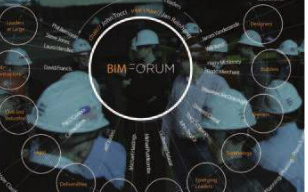By Mark Buckshon
Chicago Construction News staff writer
The decision to acquire the knowledge and technology to pursue collaborative projects with BIM and Integrated Project Delivery (IPD) needs to be made at the highest strategic level. The biggest cost of pursuit, of course, is gathering resources to develop your capacities to reach the stage where you are qualified and capable enough to even pursue the opportunities that exist. These ideas, gathered from interviews and some of the resources listed in the bibliography, may help to make the process simpler.
Collaboration and BIM – developing your current relationships
The question of whether one BIM platform or another is “best” might best be answered by looking at your current collaborative arrangements. Most industry professionals have worked with counterparts and owners collaboratively on successful projects, and these relationships are likely to be the best ones to help you set your course for enhanced relationships and more formal IPD projects. So, you could check with your counterparts and learn which platforms they are using, and why, and this may help you to narrow your search and go beyond specific software or service vendors. (If your best customer/owner prefers one BIM approach over another, you naturally might want to follow the owner’s lead.)
Learning the ropes – gathering information
As I write this article, I’m attending a national specification writers convention; where (not surprisingly) several sessions have been dedicated to BIM and IPD discussions as they relate to contract documentation, project and risk management. You can learn more by attending relevant conferences and events, picking brains, and reading. You’ll also be able to communicate informally with non-competitive colleagues who may be able to share their experiences and insights with you.
Executive commitment, champions, learning
Expect a challenging learning curve as you move forward. You won’t have much in the way of revenue and you certainly won’t achieve much competitive advantage for current projects as you go through the learning process and your clients and colleagues cannot see any proven success track-record You’ll need to build the costs into your budgets and have some patience: Immediate payback is far less likely for architects than contractors, for example.
Start small and learn by doing
Use a current, simple project with lots of lead time and flexibility (and ideally an understanding and cooperative client) to put things into operation. With the lessons you learn, you’ll be able to advance to more challenging initiatives.
Should you wait, or go now?
As the technology advances and integration issues are resolved, costs are declining. BIM technology previously could only be afforded by the largest practices and integrated design and construction businesses. Now it is less expensive. The question is – is it better to wait until things are even less expensive and more reliable? This is an easier question to ask than answer but there will come a point when you risk losing business to competitors who have moved forward while you have remained behind. You may gain enough in expertise/time and first-to-market credibility to offset the potential savings in costs by waiting.






